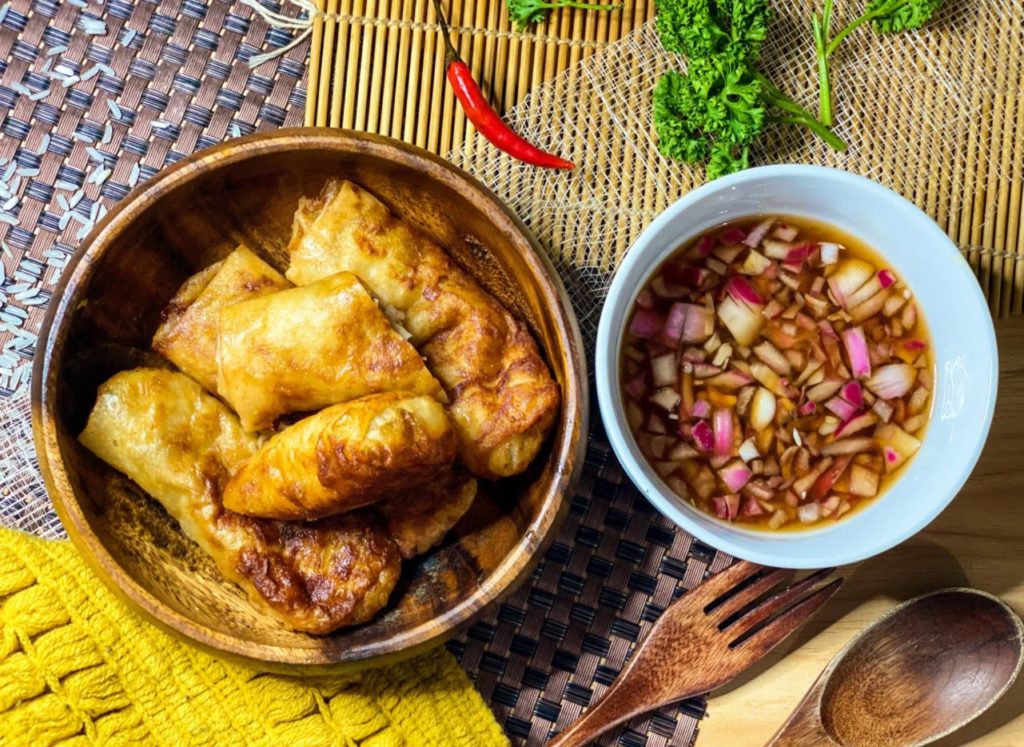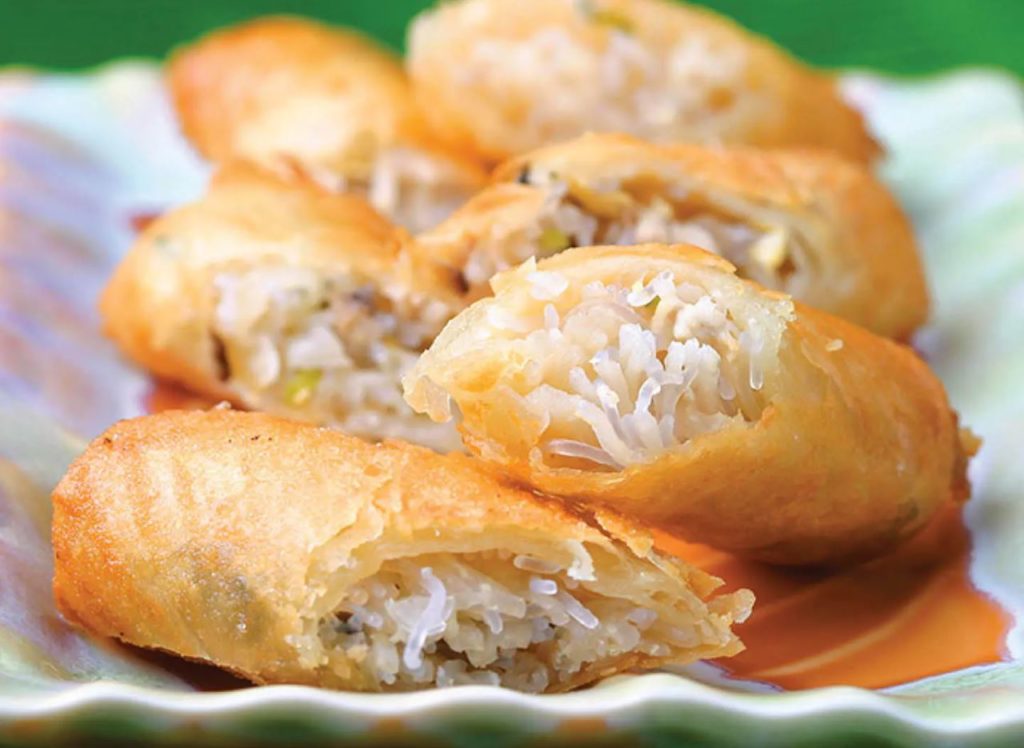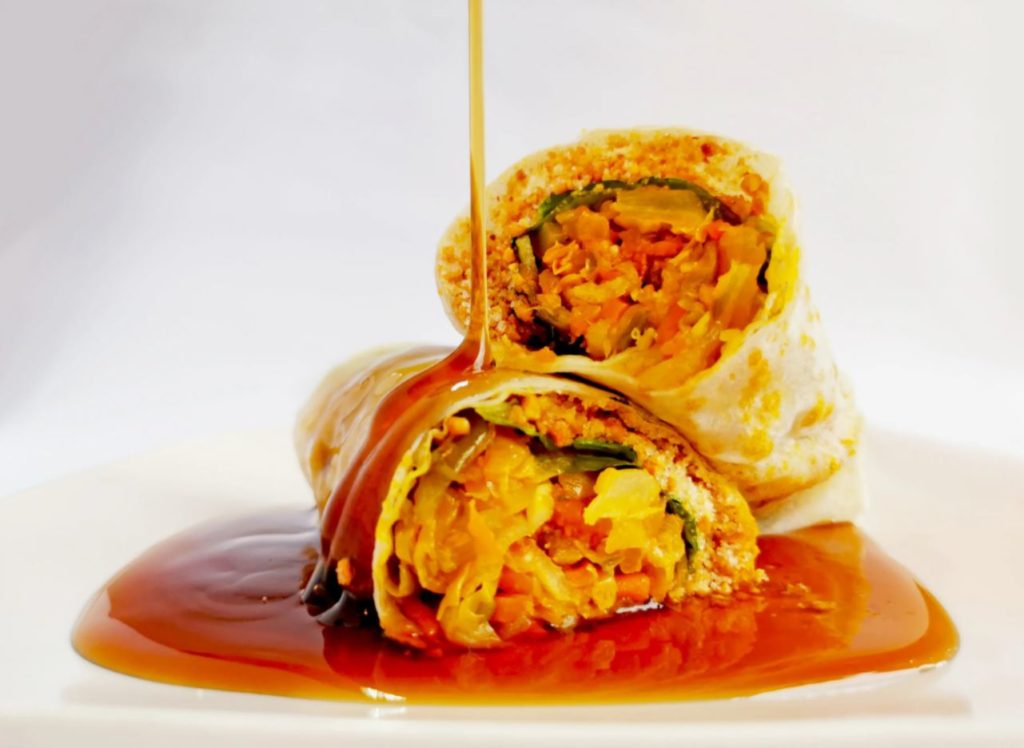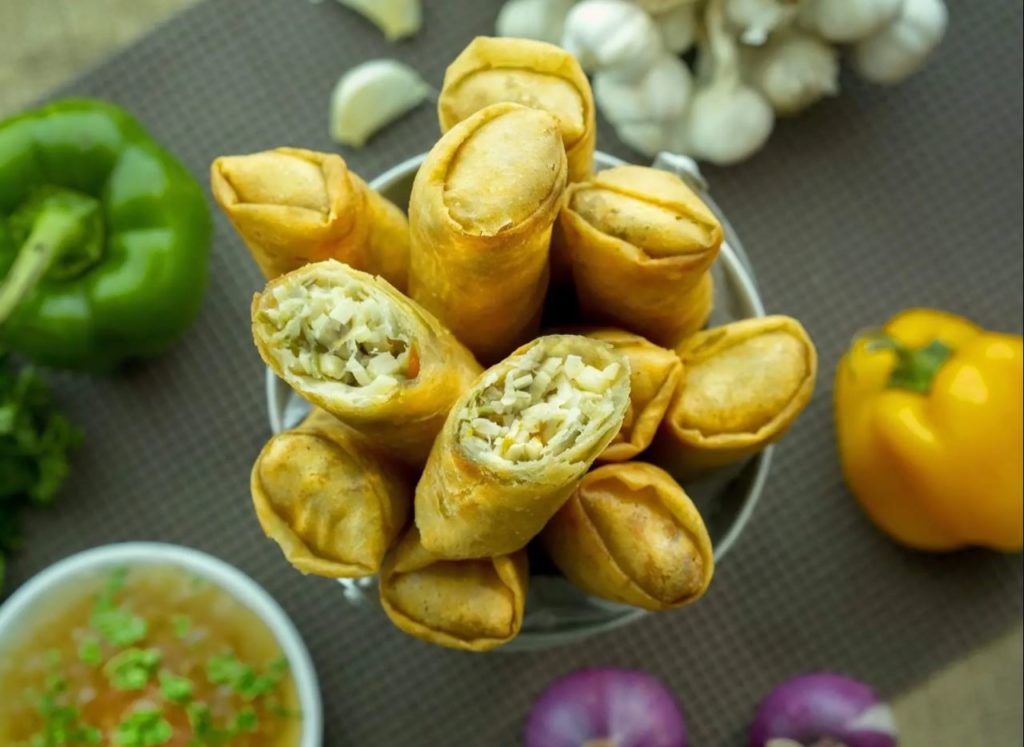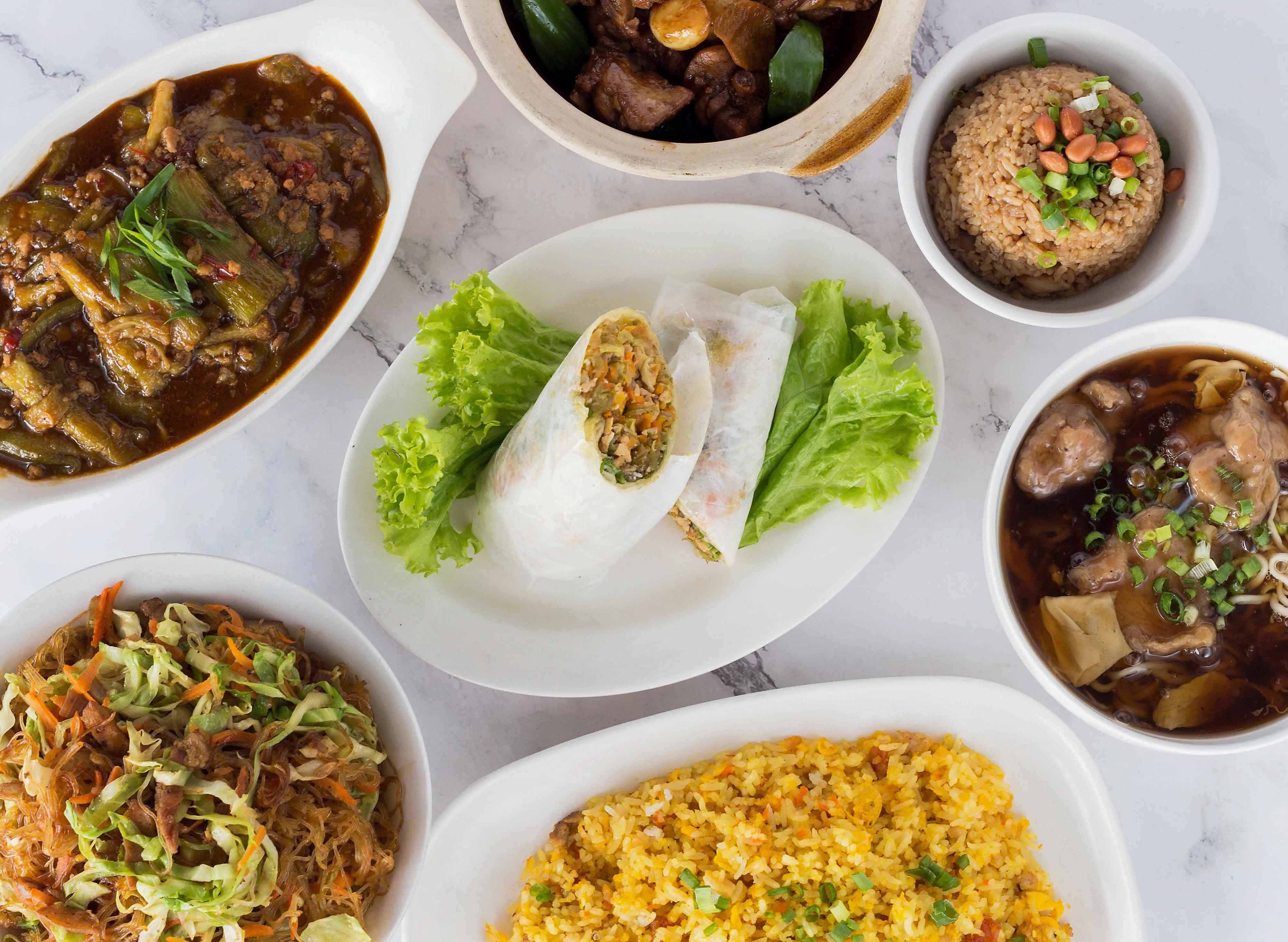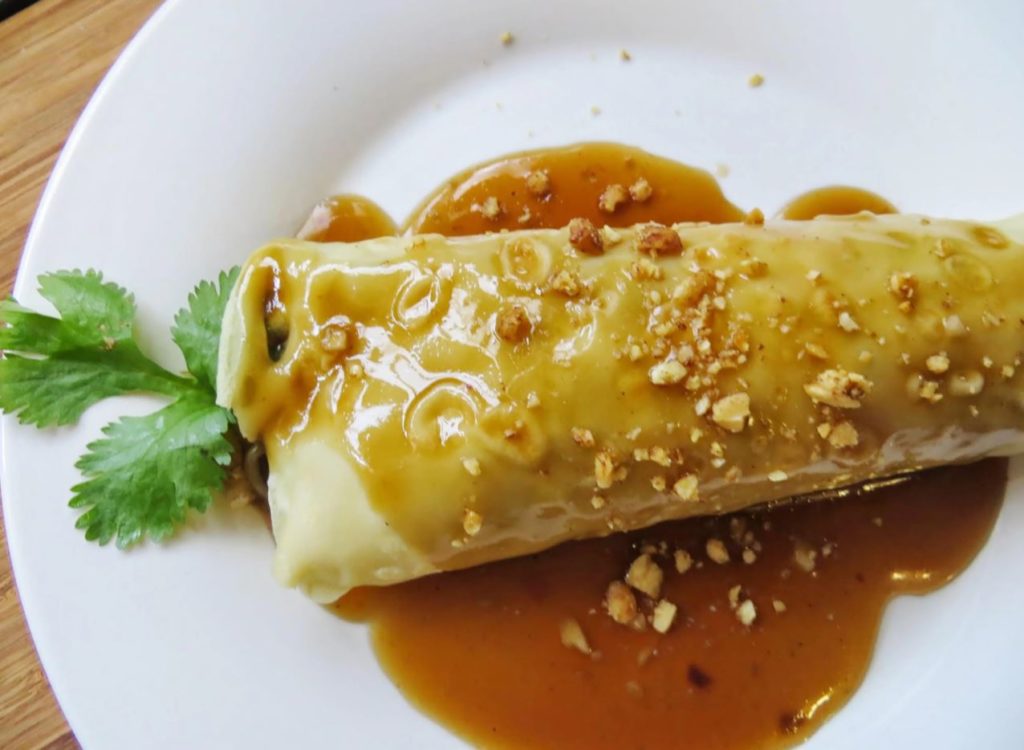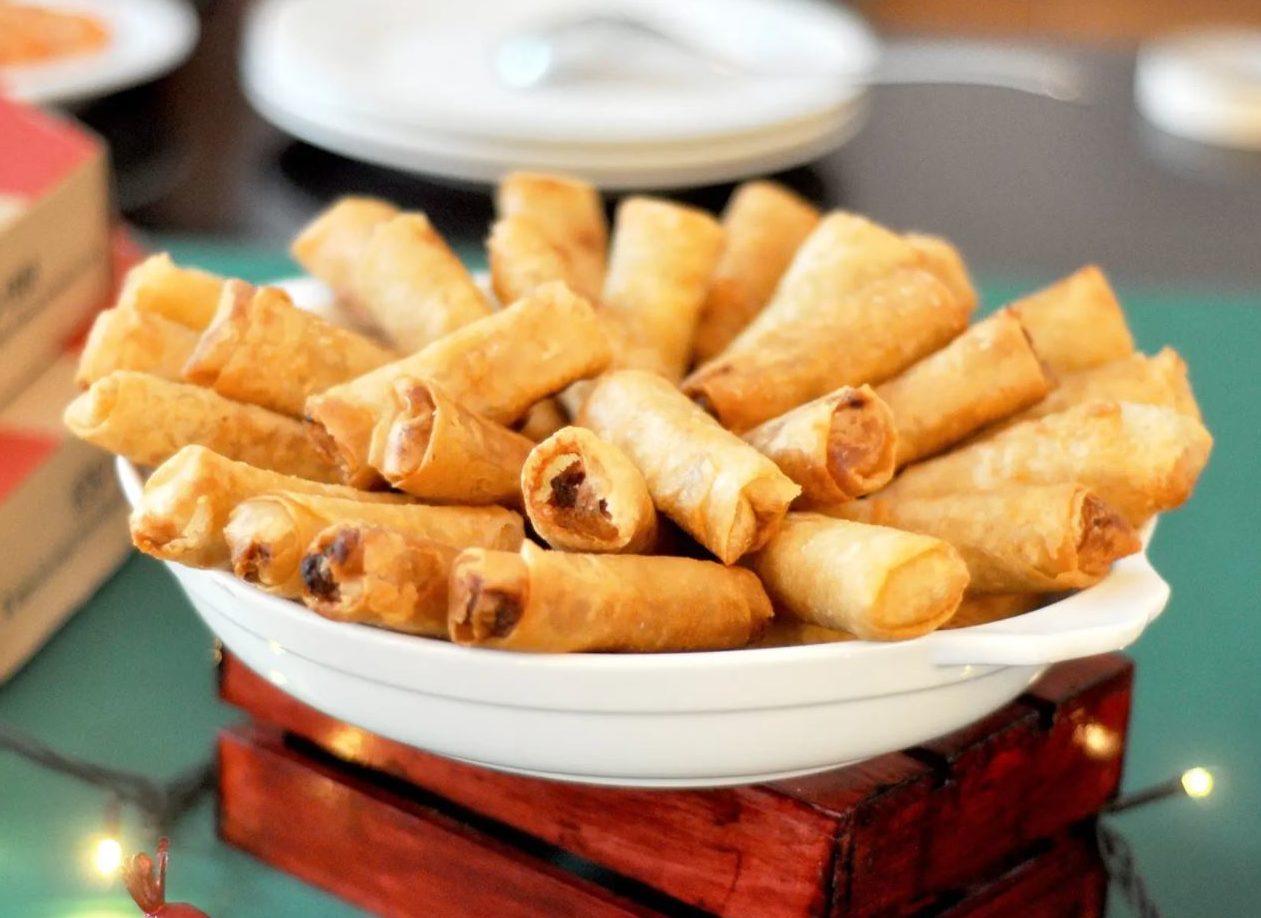Each country has its own staple party food. In the US, it has to be barbeque; in Italy, it must be a pasta dish; us here in the Philippines, no party is complete without Lumpiang Shanghai. In fact, there have been reports of disturbances during parties because of this delicious food or—to be more specific—the lack thereof.
Indeed, Pinoys are crazy about ‘Shanghai’, but why? What makes this rather simple dish the star of gatherings? And is it really from China? Let’s understand more about Lumpiang Shanghai and see what all the fuss is all about.
Lumpia, Shanghai, or Spring Rolls? Which is it, really?
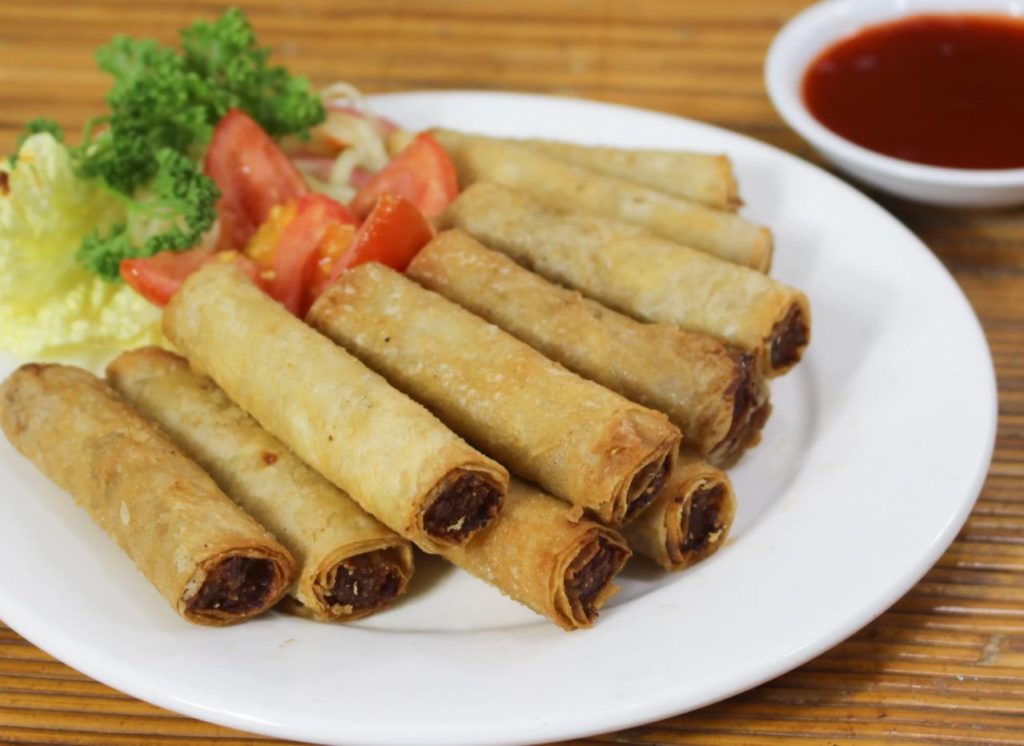
The story varies depending on who you’d ask, but for argument’s sake, let’s stick with Lumpiang Shanghai (not to be confused with lumpiang sariwa, another Filipino dish that deserves a separate article all to itself). We’re talking about the crispy, fried iteration of the lumpia.
As you’ve guessed, Lumpiang Shanghai traces its roots back to China. It’s made by wrapping vegetables in thin pastry then fried to a golden crisp. It’s usually eaten during the beginning of spring (and thus, the name Spring Rolls).
This dish found its way into the Philippines via ninth-century Chinese traders. Since then, lumpia made a home here as Pinoys took a liking of its taste and texture. We’ve since integrated local ingredients and spices, making the food our own.
Lumpia is Life
Other Southeast Asian countries also have their own versions of this dish, but not much has changed. And well, what’s there to change? As the old saying goes, ‘don’t fix what isn’t broken’, and Lumpiang Shanghai or Spring Rolls are the perfect examples of that.
These days, the recipes are pretty much the same as the original, with the exception that pork meat mixed in with chives and other vegetables are now often the preferred filling. It also matches well with various sauces like vinegar and soy sauce, but in true Pinoy fashion, we’ve created our own sweet-and-sour sauce to compliment lumpia’s savory taste.
Pinoys have also enjoyed eating this dish at any time of the day, any day of the week—no need to wait for springtime. It’s also broken through the snack barrier and crossed over into ulam territory as a partner for rice. It’s a formidable duo that’s easily become a Pinoy favorite. A certified mainstay on Filipino party tables, no party is complete without it.
If you’re looking to get your lumpia fix, we’ve put together a list of the best places to order from:
Lugaw Guys
Lamesang Pinoy Restaurant
Chowking
Our rating: 4.5 stars
Best guarantee of available deep-fried rolls combined with carrots, onions and spices
Banana Leaf
Our rating: 4.2 stars
They call it Crispy Spring Rolls Vermicelli Style. Why? Well, it’s up to you to find out!
Lucky House Restaurant
Apo Ni Rose Empanada & Lumpia
Ylaya Maki and Lumpia House
Aboy’s Fresh Lumpia
Our rating: 4.7 stars
Perfect appetizer for small groups with their 15 eggwrapper pieces of lumpia in Bilao!
Ha-inan Delivery & Take Out
Floating Island Restaurant
Our rating: 4.5 Stars
Their Lumpiang Shanghai packs a nostalgia haymaker enough to send you to your grandma’s party 10 years ago!
Get the Party Rolling! (Get it?)
The next time you find yourself setting up a gathering and there’s no Lumpiang Shanghai in sight, foodpanda is here to save you from the wrath of your hungry, craving visitors.
Featured image by Jonathan Valencia from Pixabay.
Russel Alba | Contributing Editor
Russel is a writer by profession and a foodie at heart. He’s also the father of two unbelievably adorable kids and the husband of a gorgeous, independent, and incredibly smart woman! When he’s not writing, he’s out there exploring the world for tasty food (mostly on his couch, watching food channel).
